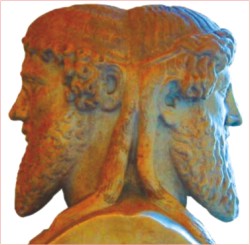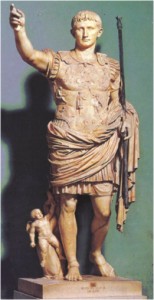Feature
Historical and linguistic aspects of English months
Dr Binoy Barman
The English calendar, more correctly, Gregorian calendar, is the most popular day counting system today. Followed worldwide, the calendar was introduced by Pope Gregory XIII with a decree on 24 February 1582. He in fact improved the previously existing calendar called Julian calendar named after Roman dictator Julius Caesar, who introduced it in 46 BC. The calendar is solar, in contrast with lunar, as it is based on the revolution of earth around the sun. The names of twelve months of this solar calendar have come to their present shape through various upheavals in history. Here we will focus on the historical and linguistic aspects of twelve months -- from January to December.
History informs us that the original Roman year had 10 named months -- Martius (March), Aprilis (April), Maius (May), Junius (June), Quintilis (July), Sextilis (August), September (September), October (October), November (November) and December (December), There were probably two unnamed months in the dead of winter when little happened in agriculture. The year began with Martius (March). Numa Pompilius, the second king of Rome about 700 BC, added the two months Januarius (January) and Februarius (February). He also moved the beginning of the year from Marius to Januarius and changed the number of days in several months to be odd. After Februarius, there was occasionally an additional month of Intercalaris (intercalendar). Julius Caesar reformed the Roman calendar changing the number of days in many months and removing Intercalaris.
 January has come from the word 'Janus', the Roman guardian of doors, who is depicted with two faces looking in opposite directions. One face is supposed to be looking back to the old year and the other face to the new year. His festival month is January. January is Janus' month, for which the Latin word is Januarius (Janus+arius). '-arius' is the Latin suffix which means 'pertaining to'. In Latin 'mensis' refers to 'month'. Therefore 'Januarius mensis' means 'month of Janus'. In Middle English, 'Januarius' became 'Januaire'. Januarius had 29 days initially; Julius Caesar made it 31 days long. January has come from the word 'Janus', the Roman guardian of doors, who is depicted with two faces looking in opposite directions. One face is supposed to be looking back to the old year and the other face to the new year. His festival month is January. January is Janus' month, for which the Latin word is Januarius (Janus+arius). '-arius' is the Latin suffix which means 'pertaining to'. In Latin 'mensis' refers to 'month'. Therefore 'Januarius mensis' means 'month of Janus'. In Middle English, 'Januarius' became 'Januaire'. Januarius had 29 days initially; Julius Caesar made it 31 days long.
February is the month of Februa, which was the Roman festival of purification (in Latin the term 'Februum' means purification and the ritual for it is called 'Februa'), held on February fifteenth. Latin dies februatus means 'day of purification'. The month of Februa is expressed in Latin as Februarius (Februa + arius), structurally meaning 'of Februa' or 'pertaining to Februa'. Latin 'Februarius mensis' means 'month of Februa'. In Middle English, the name also remained Februarius like Latin. Februarius had 23/24 days before Julian calendar was enforced. It became 29 days every fourth year, otherwise 28 days. In earlier calendar it was the last month and in 450 BC it became the second.
 March is the third month of the year in the Gregorian calendar, and one of the seven months which have 31 days each. March has come from 'Martius', again derived from Mars, the Roman god of war (identified with Greek god Ares). In ancient Rome, March was the first month of the year, the time considered suitable for the start of the military campaign. Many cultures and religions still celebrate the beginning of the New Year in March. Morphologically, Martius is 'Mars + us'. 'Us' is adjective suffix, so that 'Martius mensis' means 'month of Mars'. The Latin form 'Martius' was retained in Old English. It gave rise to the Middle English form 'Marche' and Anglo-Norman form 'Marche', from which Modern English dropped the final 'e'. March is the third month of the year in the Gregorian calendar, and one of the seven months which have 31 days each. March has come from 'Martius', again derived from Mars, the Roman god of war (identified with Greek god Ares). In ancient Rome, March was the first month of the year, the time considered suitable for the start of the military campaign. Many cultures and religions still celebrate the beginning of the New Year in March. Morphologically, Martius is 'Mars + us'. 'Us' is adjective suffix, so that 'Martius mensis' means 'month of Mars'. The Latin form 'Martius' was retained in Old English. It gave rise to the Middle English form 'Marche' and Anglo-Norman form 'Marche', from which Modern English dropped the final 'e'.
April is the fourth month of the year in the Gregorian calendar, earlier second month. April has come from 'Aprilis', derived from 'aperire' which means 'open' in Latin. Plants begin to open or grow during this month. April was sacred to Venus (Roman) or Aphrodite (Greek). Aprilis was originally 'Aphrilis', derived from Greek name 'Aphros', shorter name for Aphrodite. Some think that in the 14th century the Latin word 'Aprilis' was taken from Etruscan 'apru' which came from Greek 'Aphro'. During Numa the month had 29 days, until Julius when it got 30 days.
May is called Maia's month. 'Maia', meaning 'the great one', is the Italic goddess of spring, the daughter of Faunus and wife of Vulcan. In some mythological scriptures she is Roman goddess of fertility and growth. The Latin form 'Maius' means 'of Maia', hence 'Maius mensis' refers to 'month of Maia'. In Old French the word became 'Mai' and Old English 'Maius'. The change might have taken place during the 12th century. Maius or May has always had 31 days.
 June is called Juno's month. 'Juno' is the principal goddess of the Roman pantheon. Guardian of women, she protects marriage. She is the wife of Jupiter. She is also identified with the Greek goddess Hera. The Latin form for the month is 'Junius' (of Juno). As adjective Junius means young, after the goddess Juno. The word remained the same in Old English, but it became 'Juin' in Old French and Jun(e) in Middle English. Junius had 30 days before Numa when it got 29 days. Later Julius Caesar made it 30 days long. June is called Juno's month. 'Juno' is the principal goddess of the Roman pantheon. Guardian of women, she protects marriage. She is the wife of Jupiter. She is also identified with the Greek goddess Hera. The Latin form for the month is 'Junius' (of Juno). As adjective Junius means young, after the goddess Juno. The word remained the same in Old English, but it became 'Juin' in Old French and Jun(e) in Middle English. Junius had 30 days before Numa when it got 29 days. Later Julius Caesar made it 30 days long.
July is Julius Caesar's month. Julius Caesar reformed the Roman calendar in 46 BC. This month was named in Caesar's honour by Mark Antony in 44 BC. In Latin 'Julius mensis' means 'month of Julius'. Latin 'Julius' gave rise to the form 'Julie' in Middle English. Previously this month was called Quintilis from the word 'quintus' (five) as it was the fifth month in the Roman calendar. Latin 'quintilis mensis' means 'fifth month. The month has always had 31 days.
August is Augustus Caesar's month. Emperor Augustus Caesar completed the calendar reform of Julius Caesar. In the process, he renamed this month after himself in 8 BC. 'Augustus mensis' means 'month of Augustus'. In Latin it was 'Sextilis' which means 'sixth' and 'Sextilis mensis' the 'sixth month'. Sextilis had 30 days until Numa when it got 29 days; Then Julius Caesar made it 31 days. The Roman emperor Augustus continued the tradition.

September literally means the seventh. In Latin 'septem' is 'seven' and 'ber' is adjective suffix. 'September mensis' means 'seventh month'. During the time of the year, Romans used to celebrate the magnanimity of the seven sister goddesses. In the memory of these goddesses they called the month 'Septem'. In Middle English, the name was 'Semptembre'. September had 30 days until Numa when it had 29 days and from Julius it got 30 days.
October literally means the eighth, though it is the tenth month in the present calendar. In Latin 'octo' is 'eight' + 'ber' is adjective suffix. Latin 'october mensis' means 'eighth month'. It is one of seven Gregorian months with a length of 31 days. In Middle English the name was 'Octobre'. October has always had 31 days.
November literally means ninth though it is the eleventh month of the present calendar. 'Novem' means nine. The old word for the ninth month in Latin was 'Novembris'. 'Novembris mensis' means 'ninth month. Novembris later became November leading to 'novembre' in Middle English. Novembris had 30 days until Numa when it got 29 days. Since Julius Caesar, it became 30 days. Novembris had 30 days; Numa made it 29, and Julius 30.
December literally means tenth, though it is the twelfth and last month in present calendar. 'Decem' means ten. Latin December became 'decembre' in Old French and in Middle English. December had 30 days; Numa reduced it to 29 days, and Julius Caesar increased it to 31 days.
(The writer is Assistant Professor and Head, Department of English, Daffodil International University.)
| 